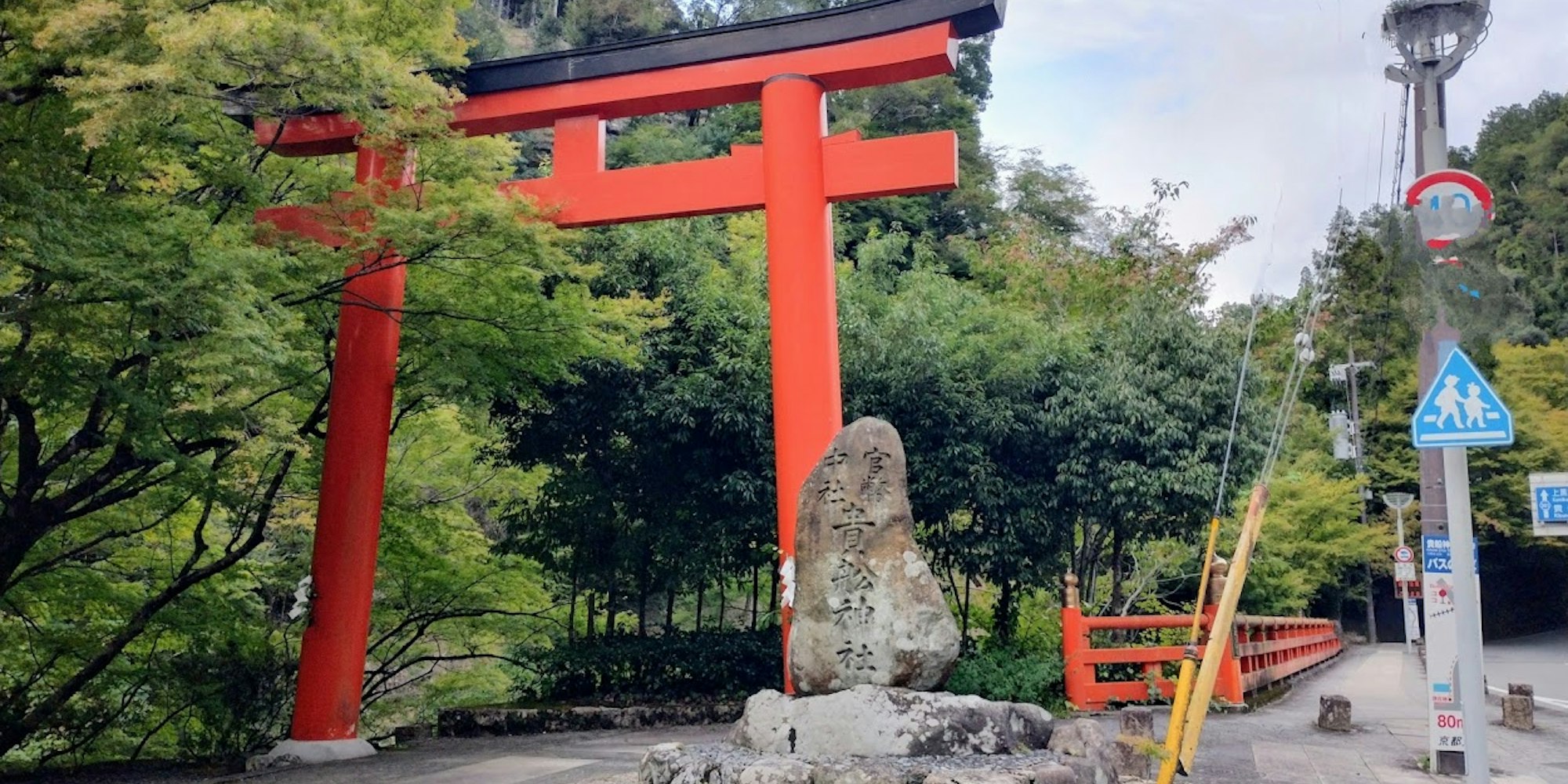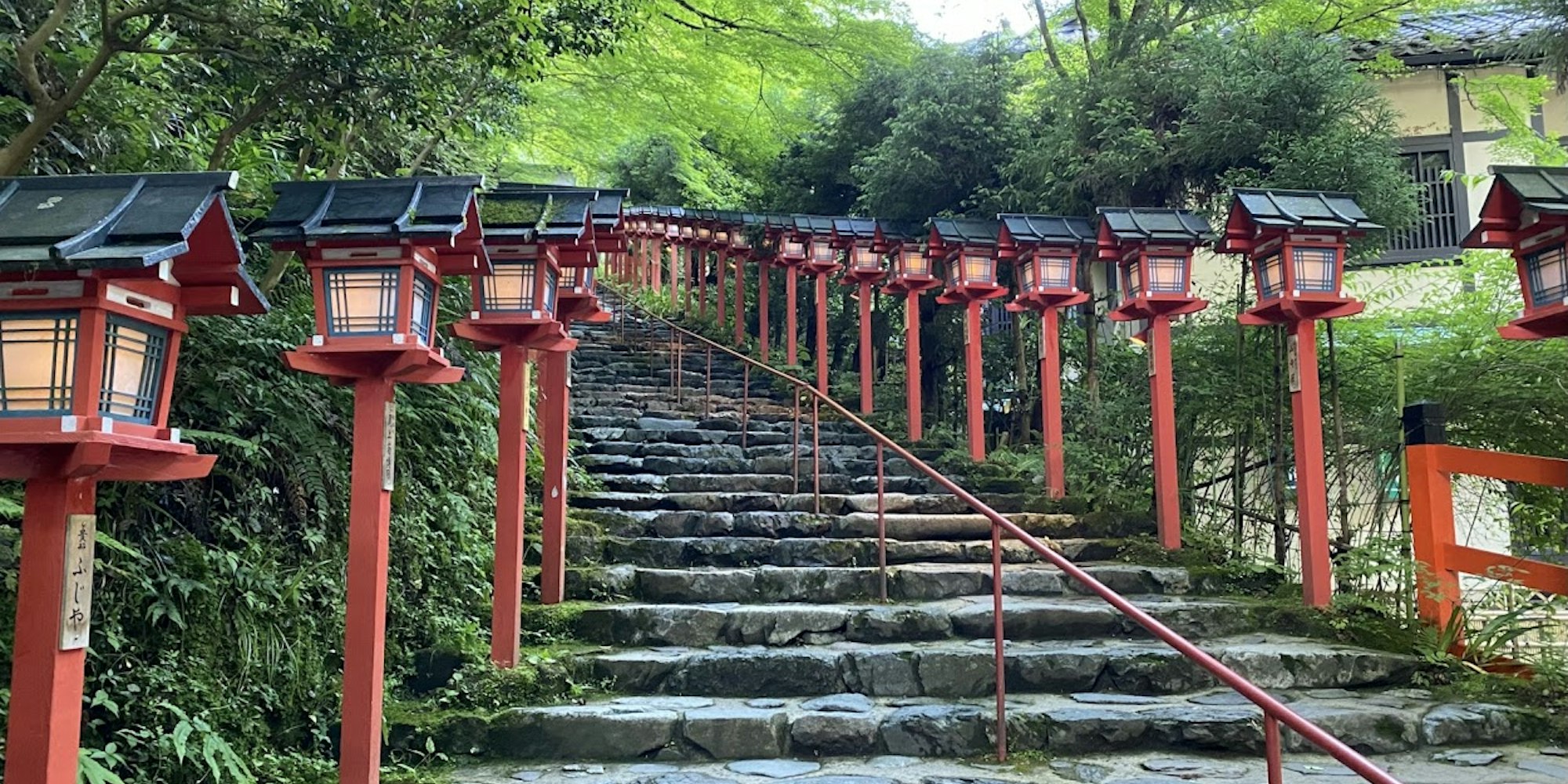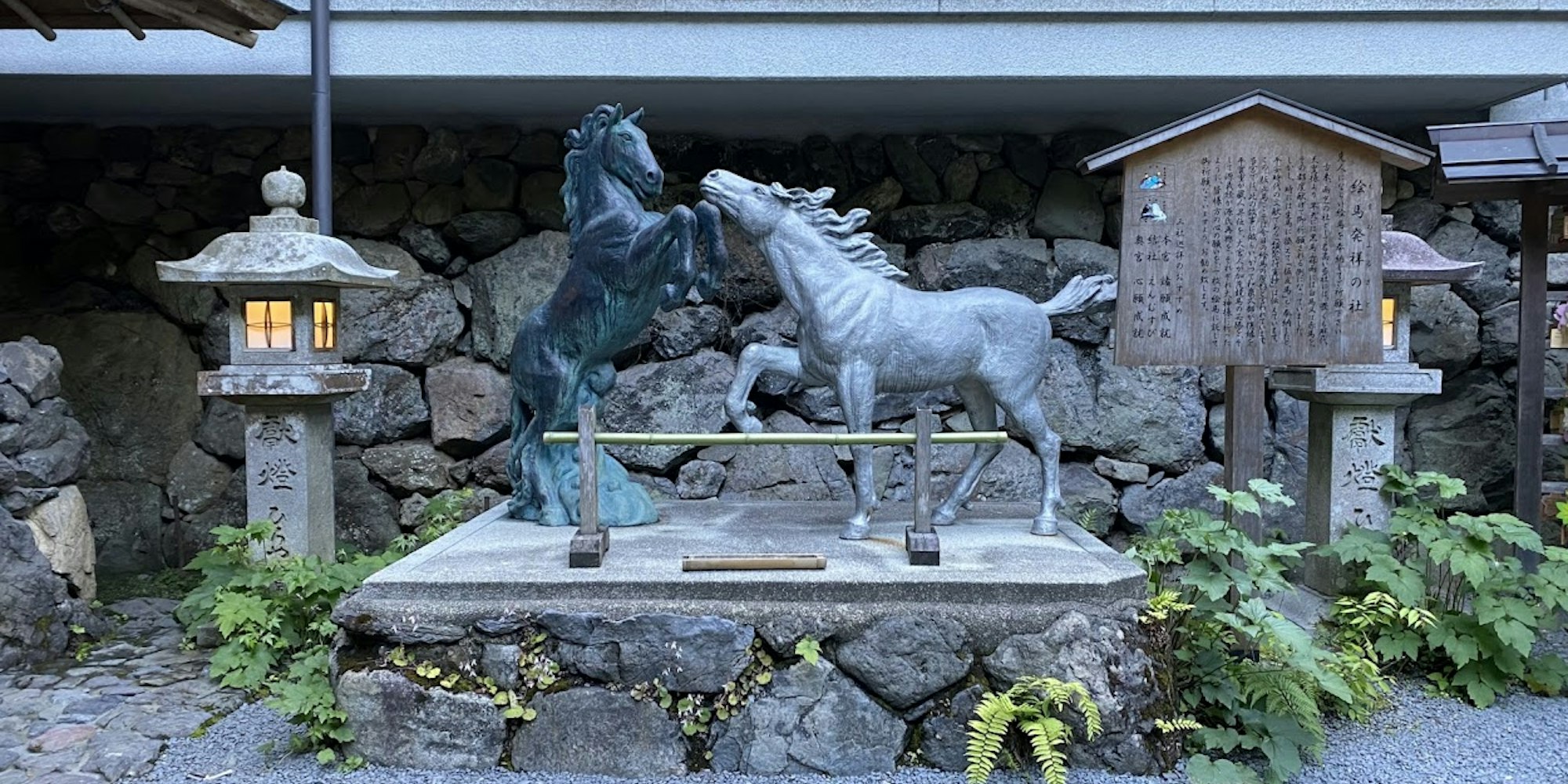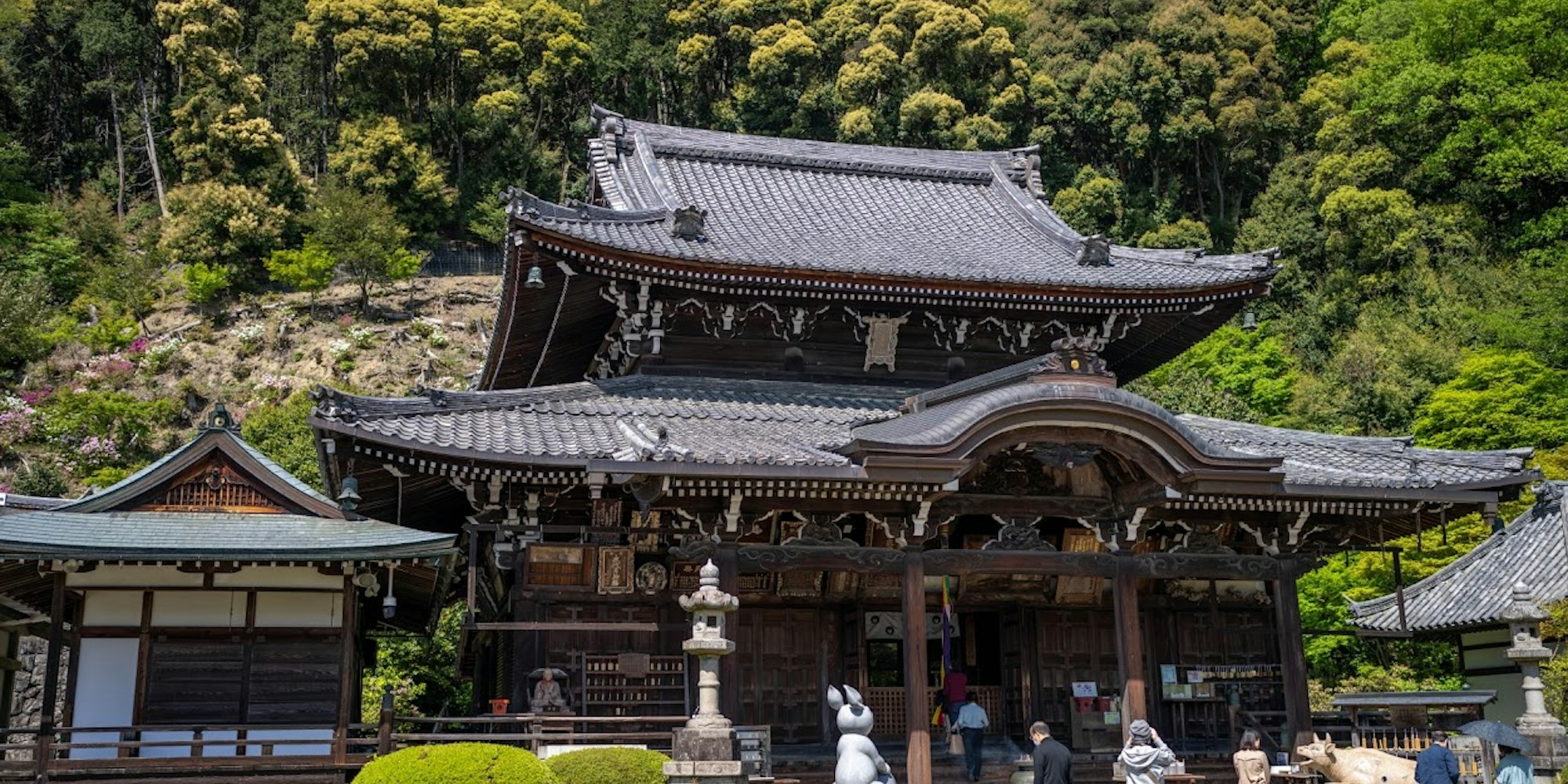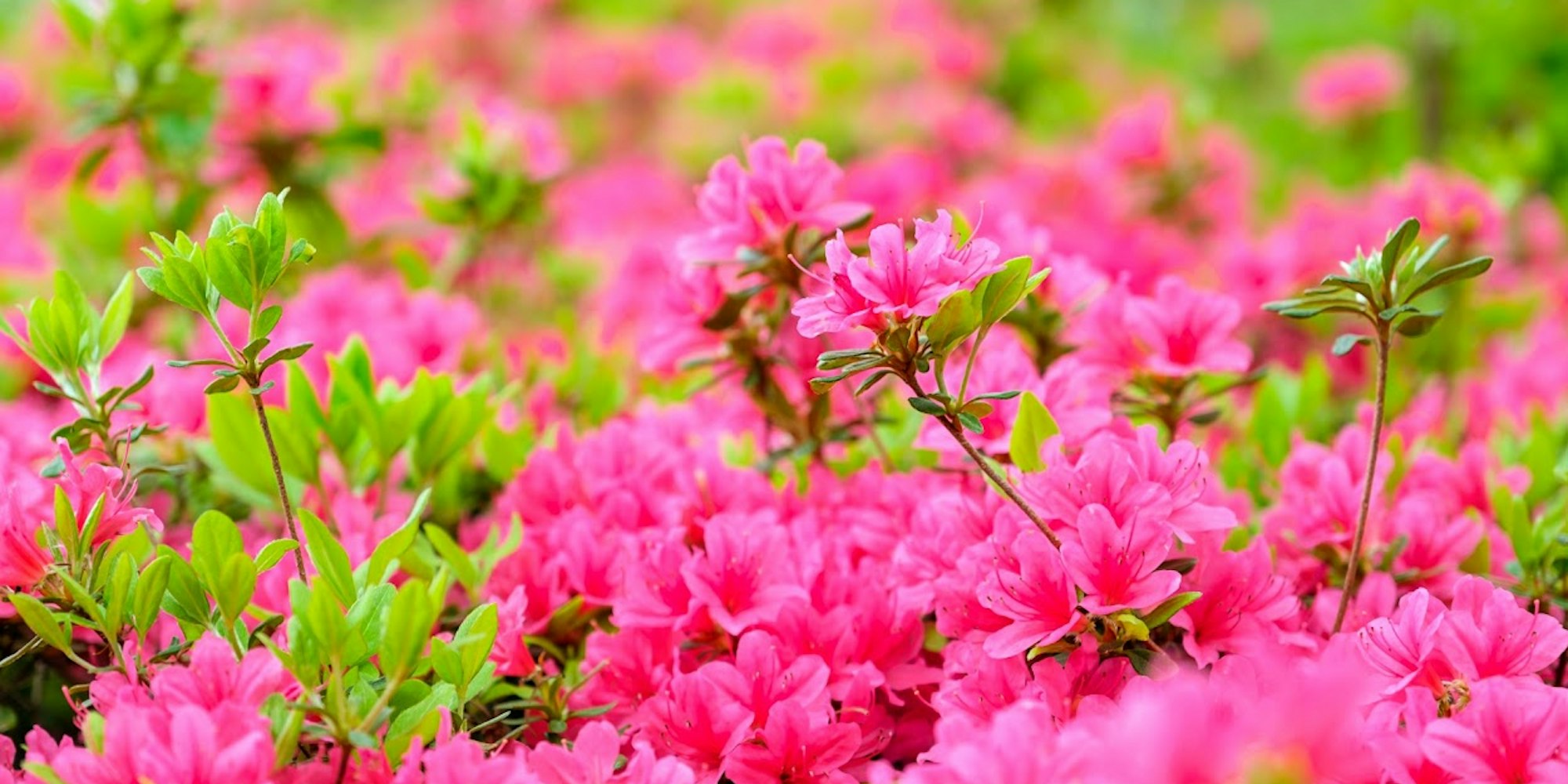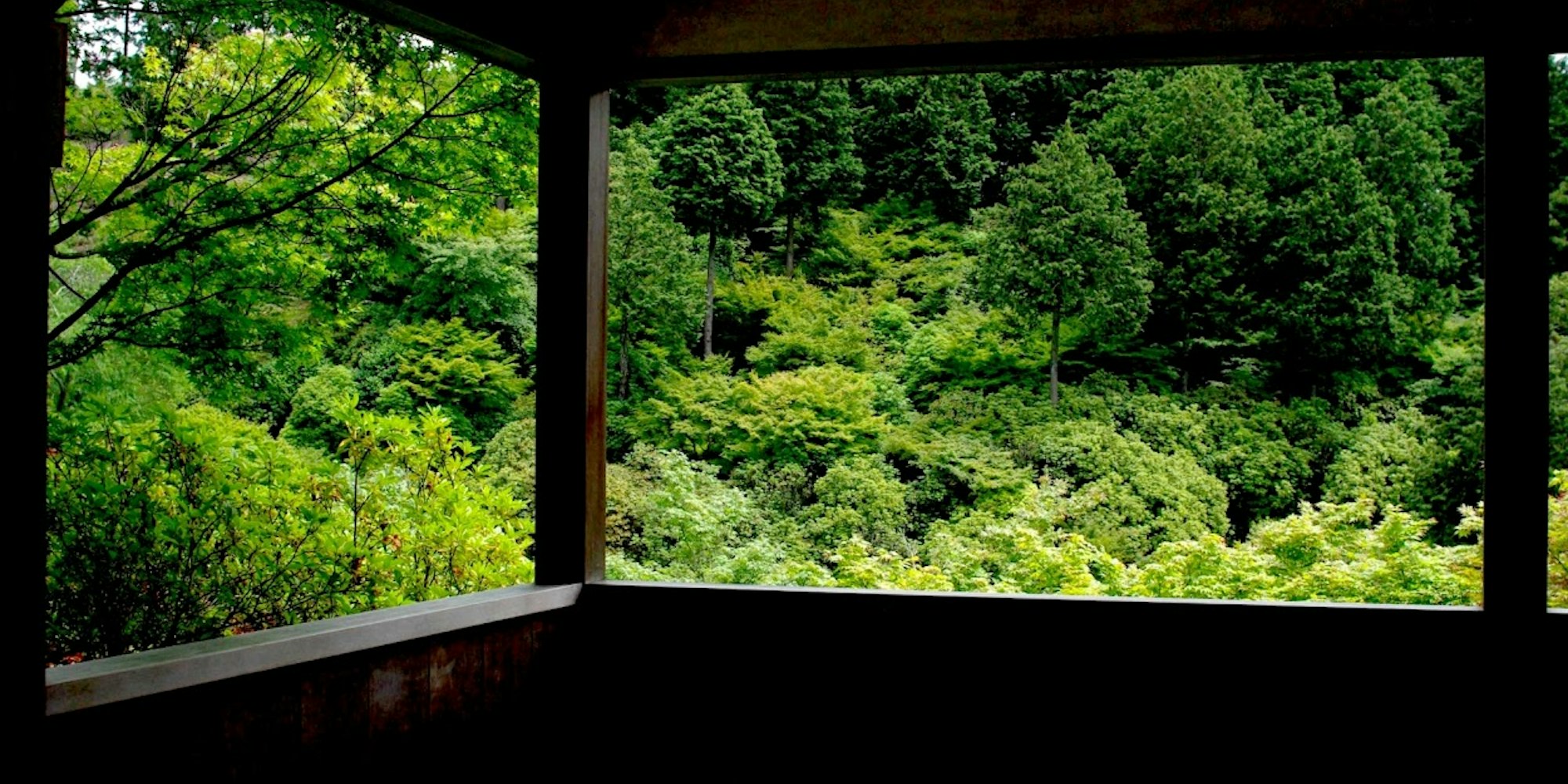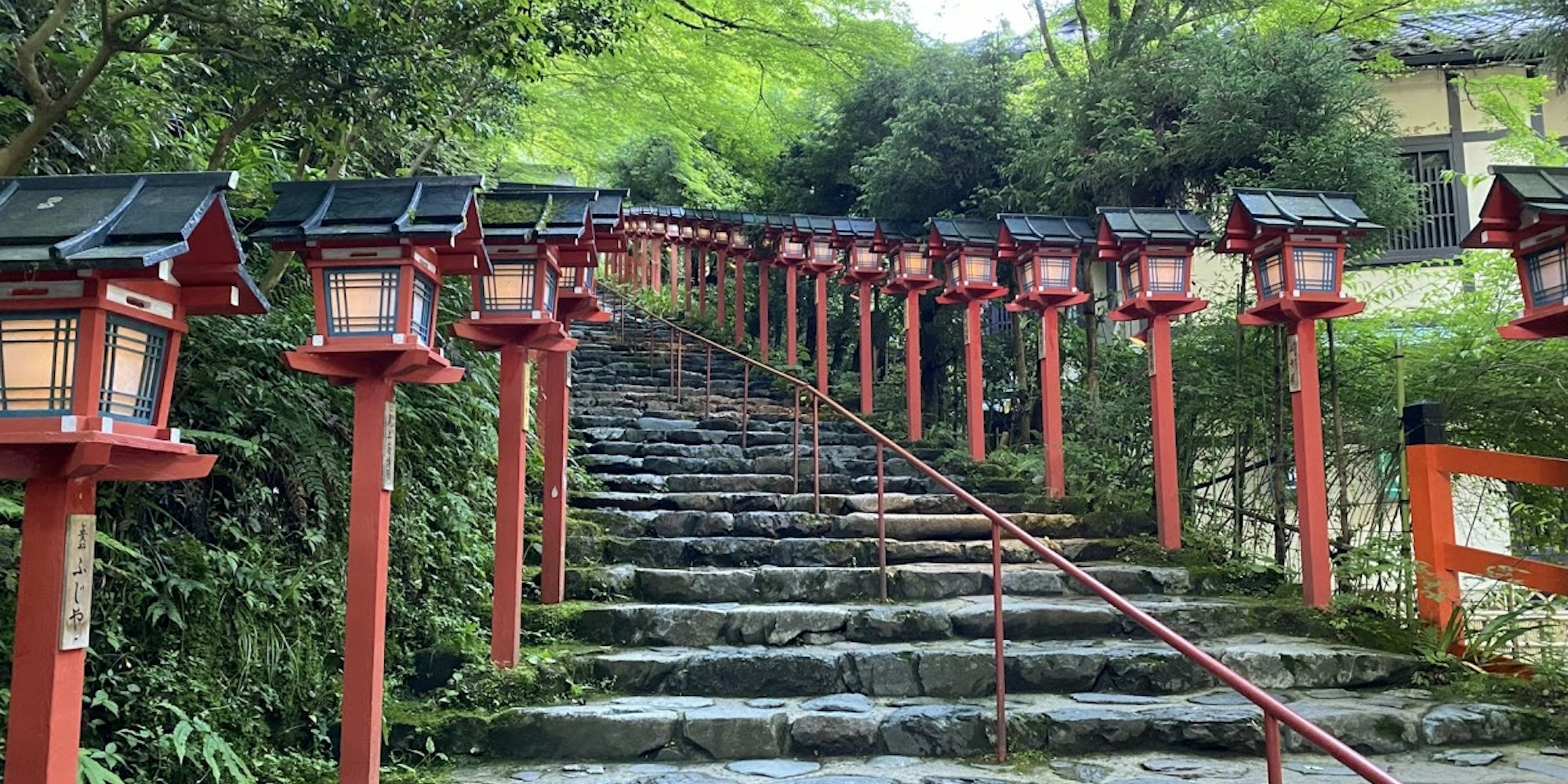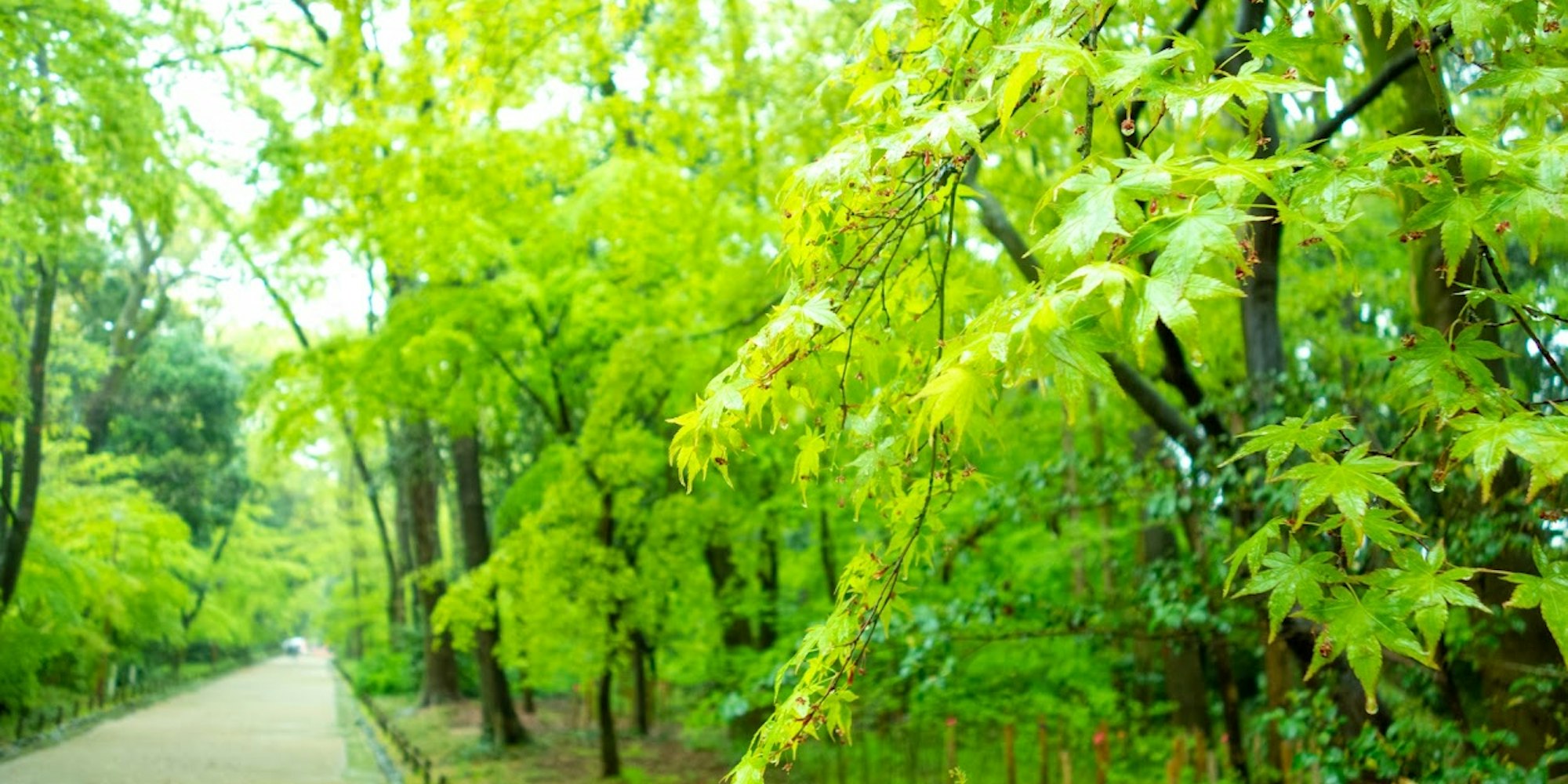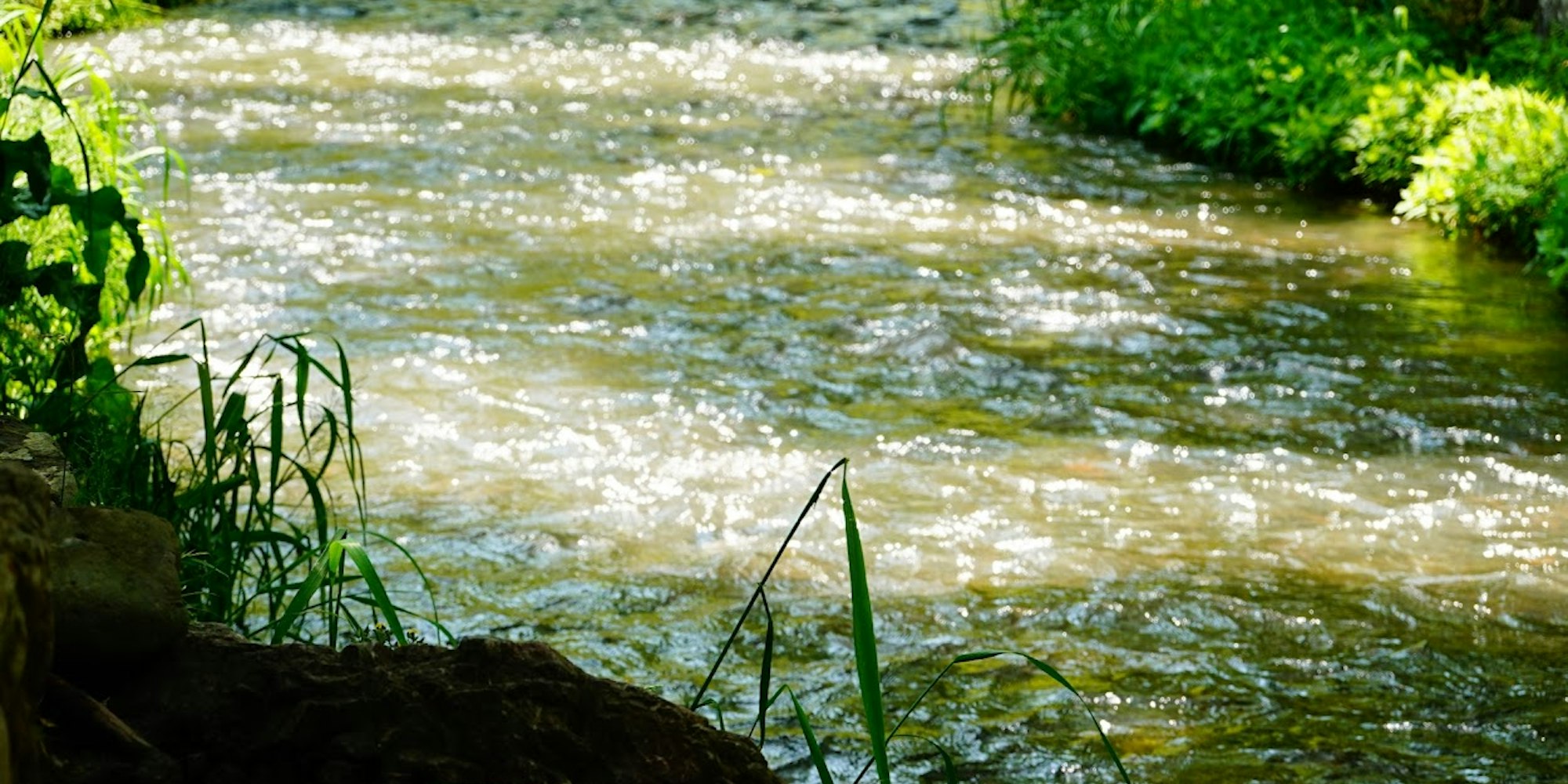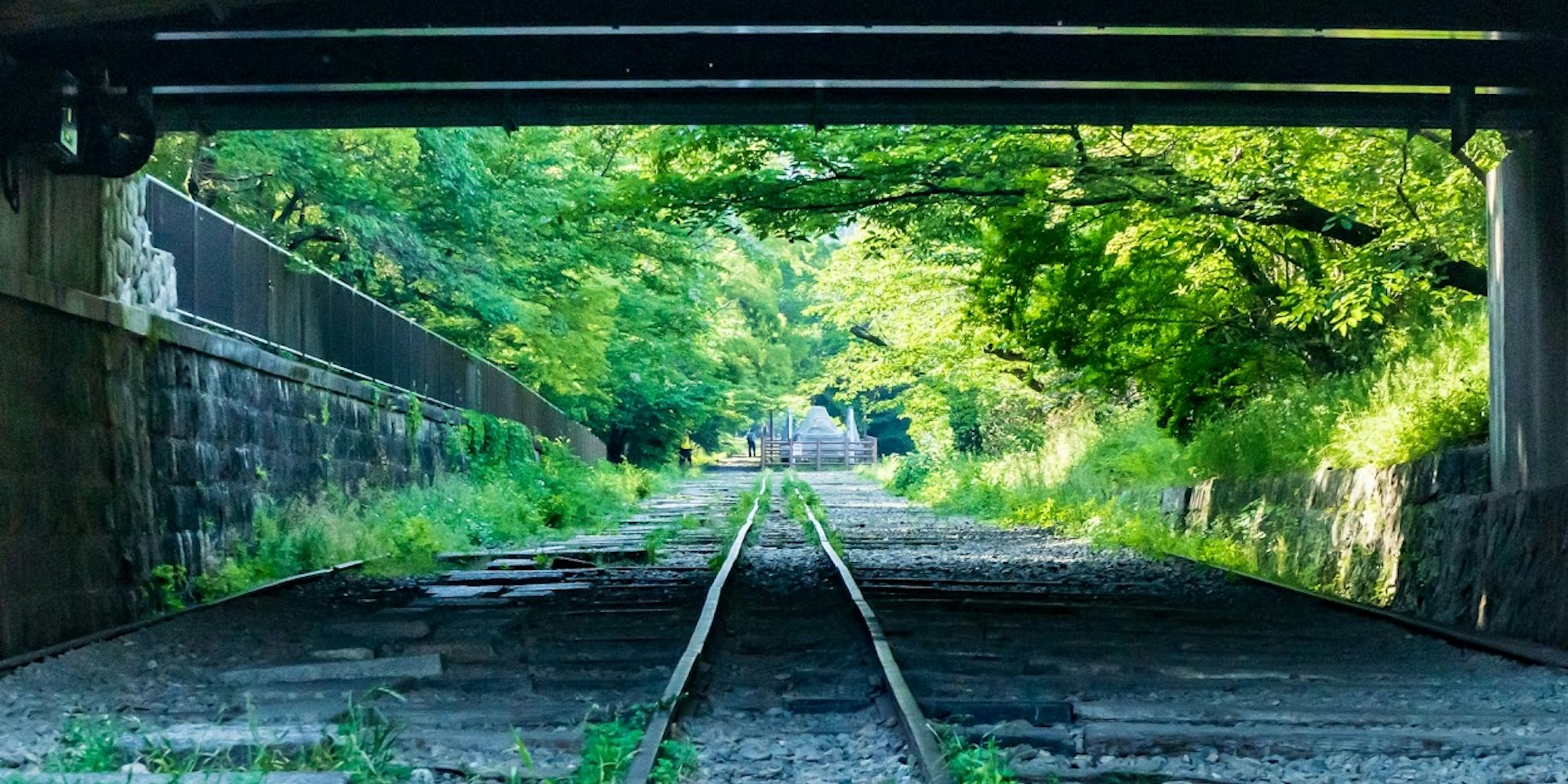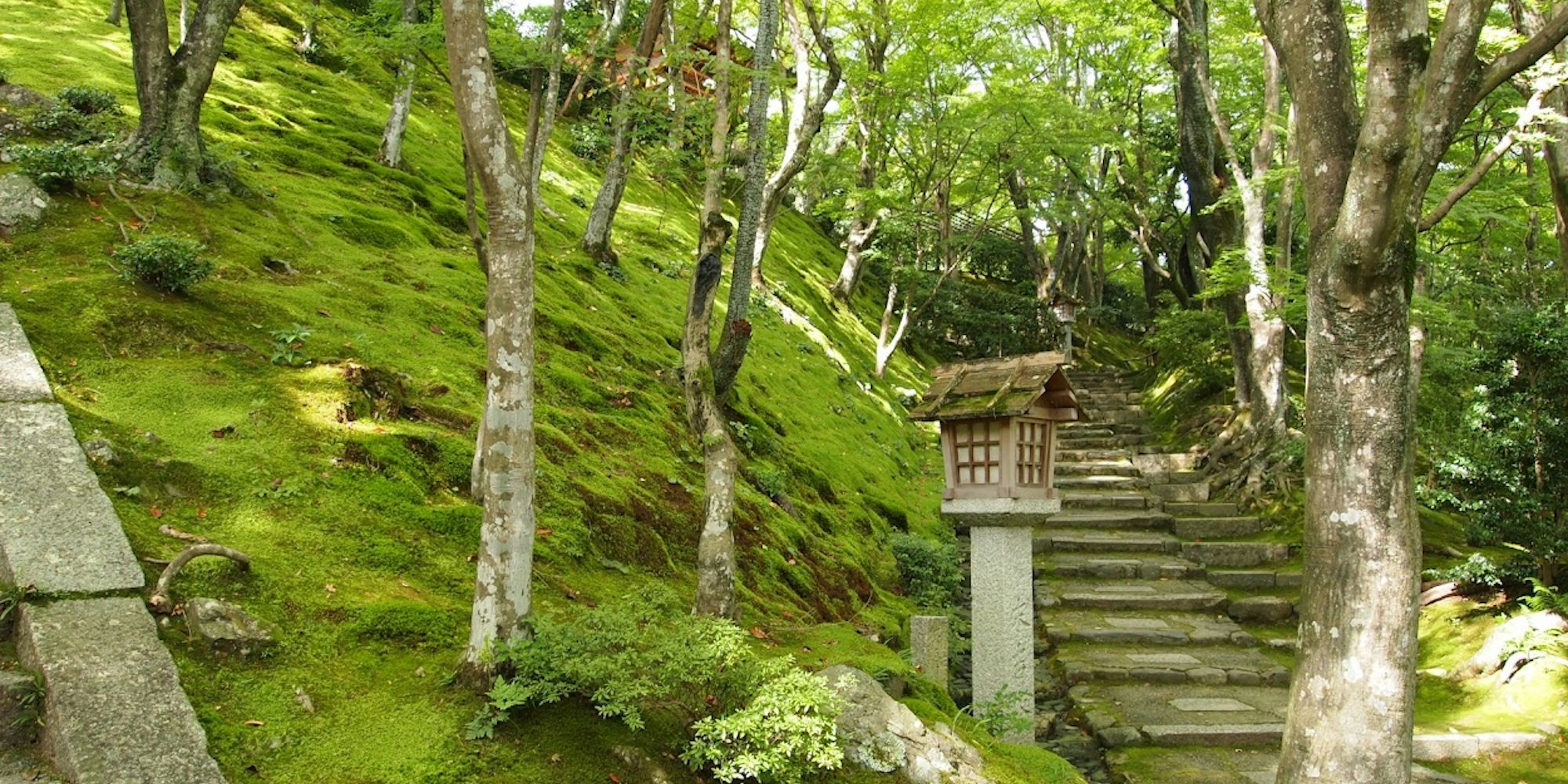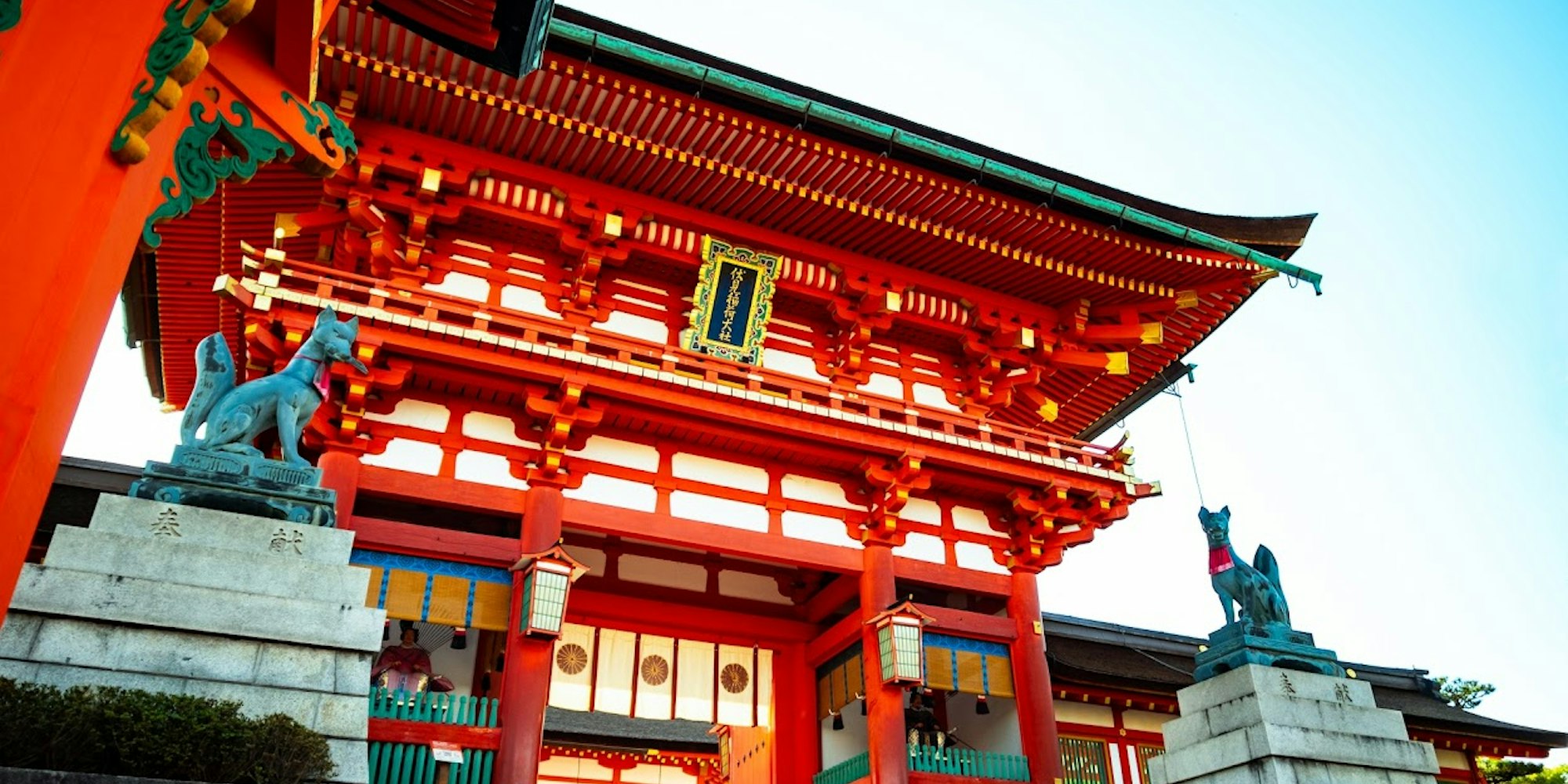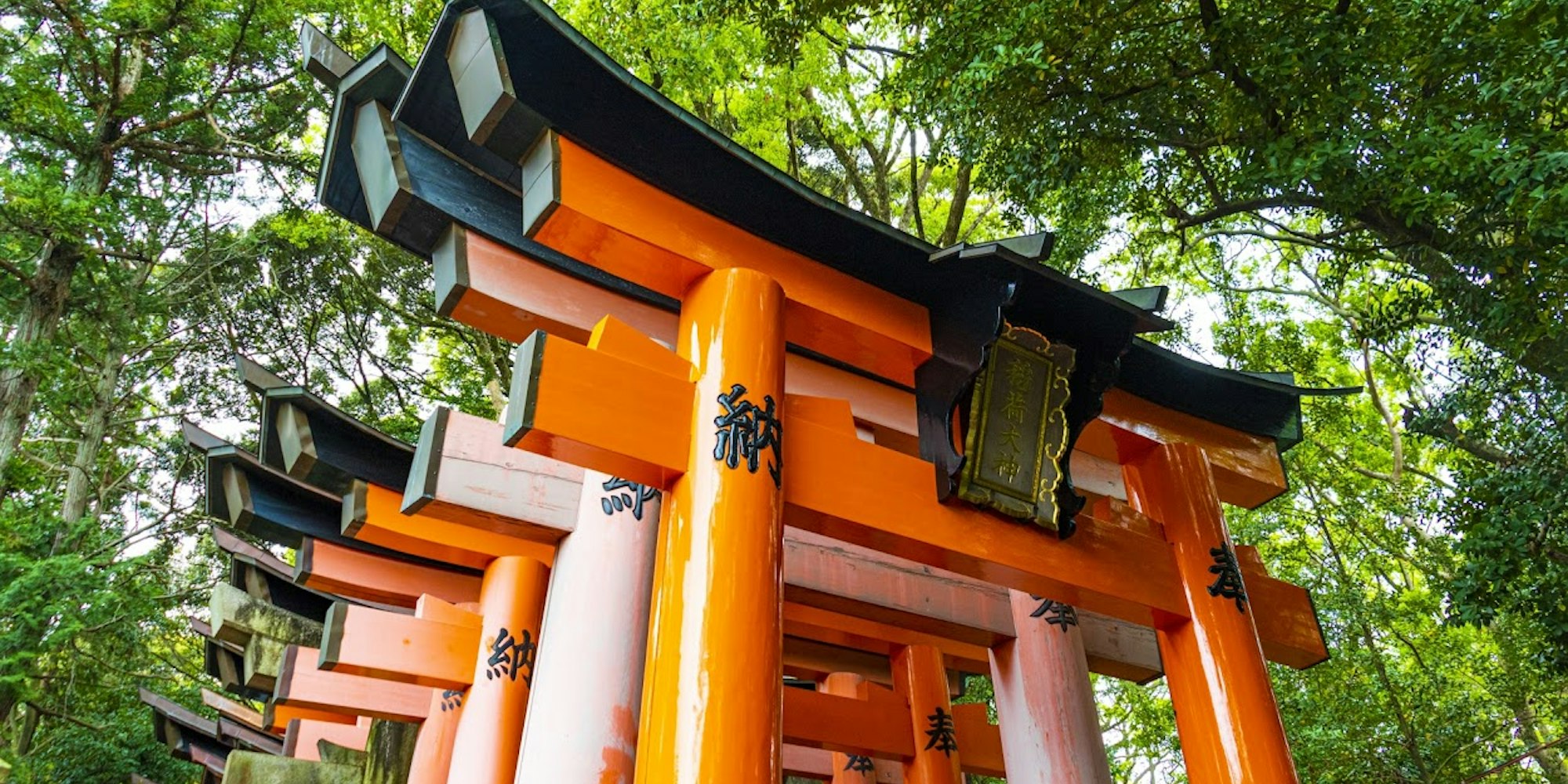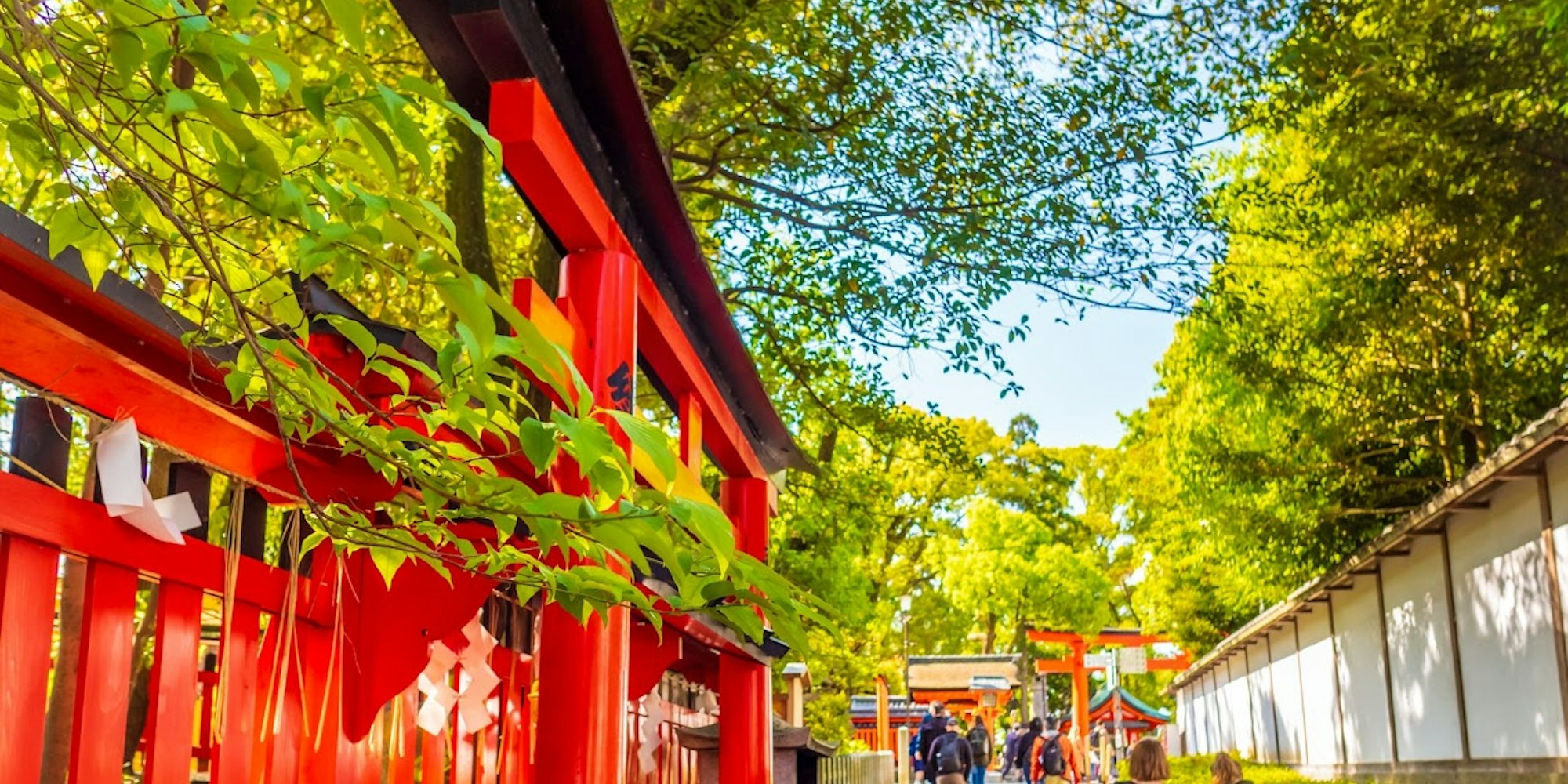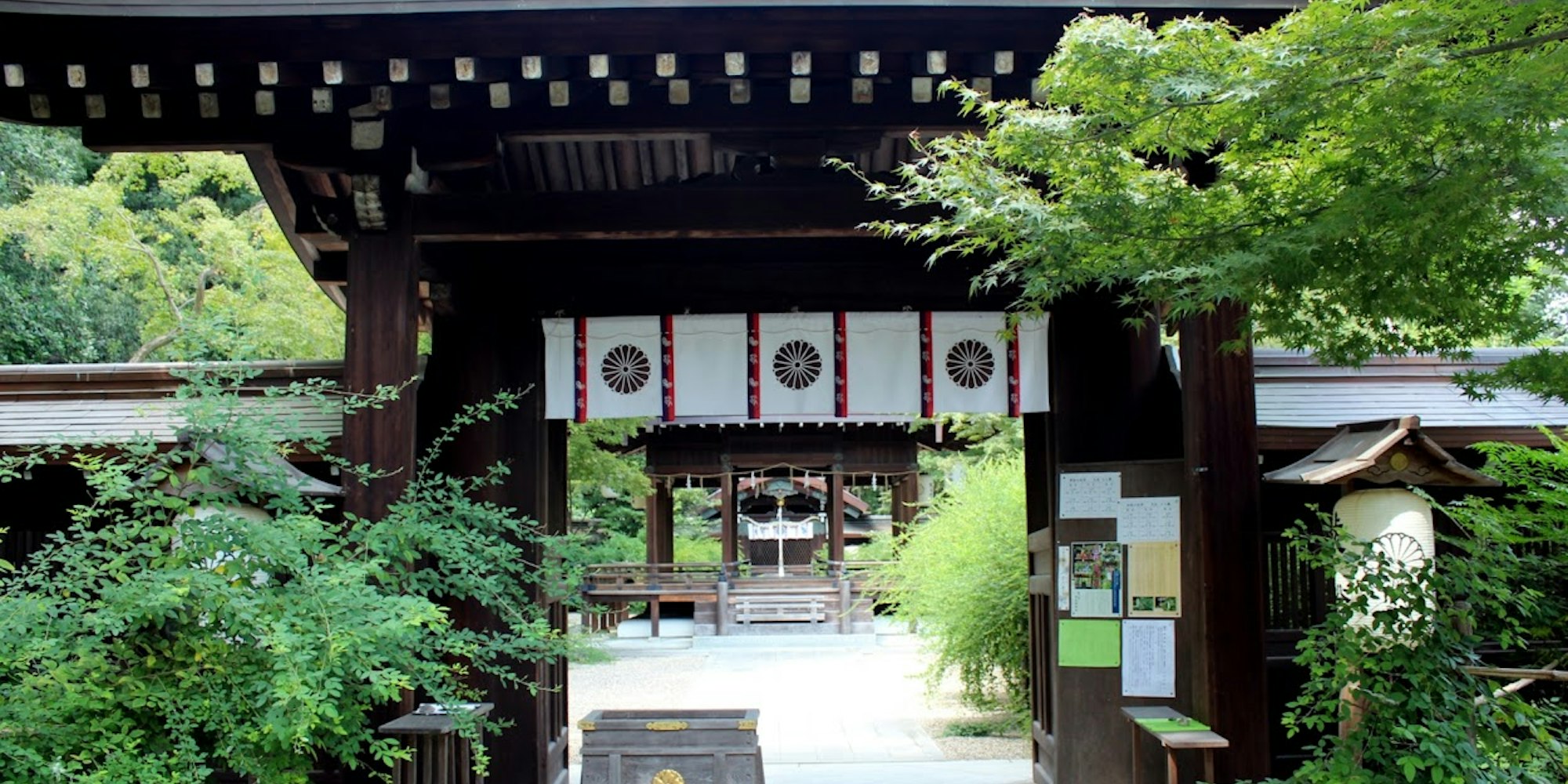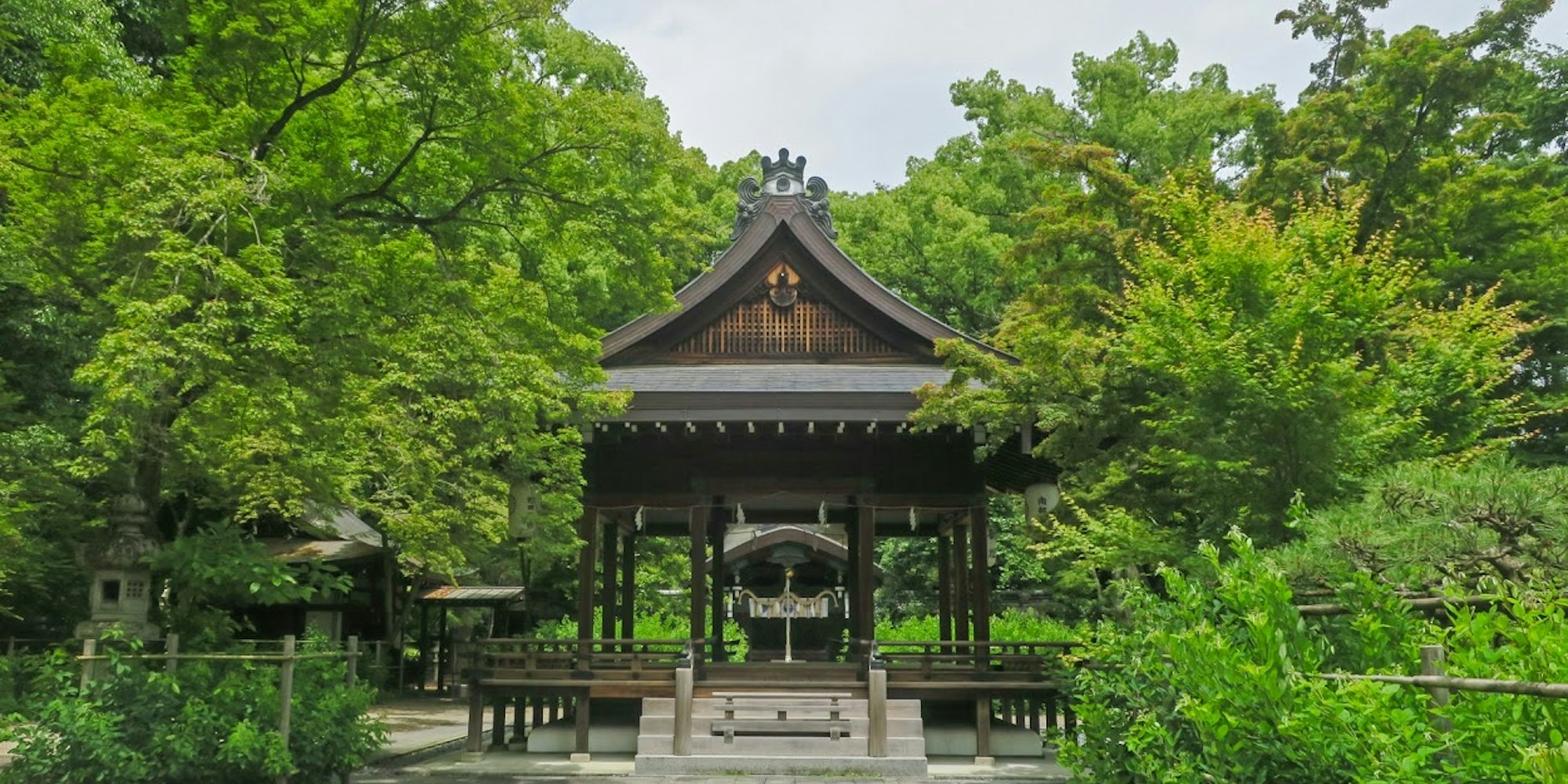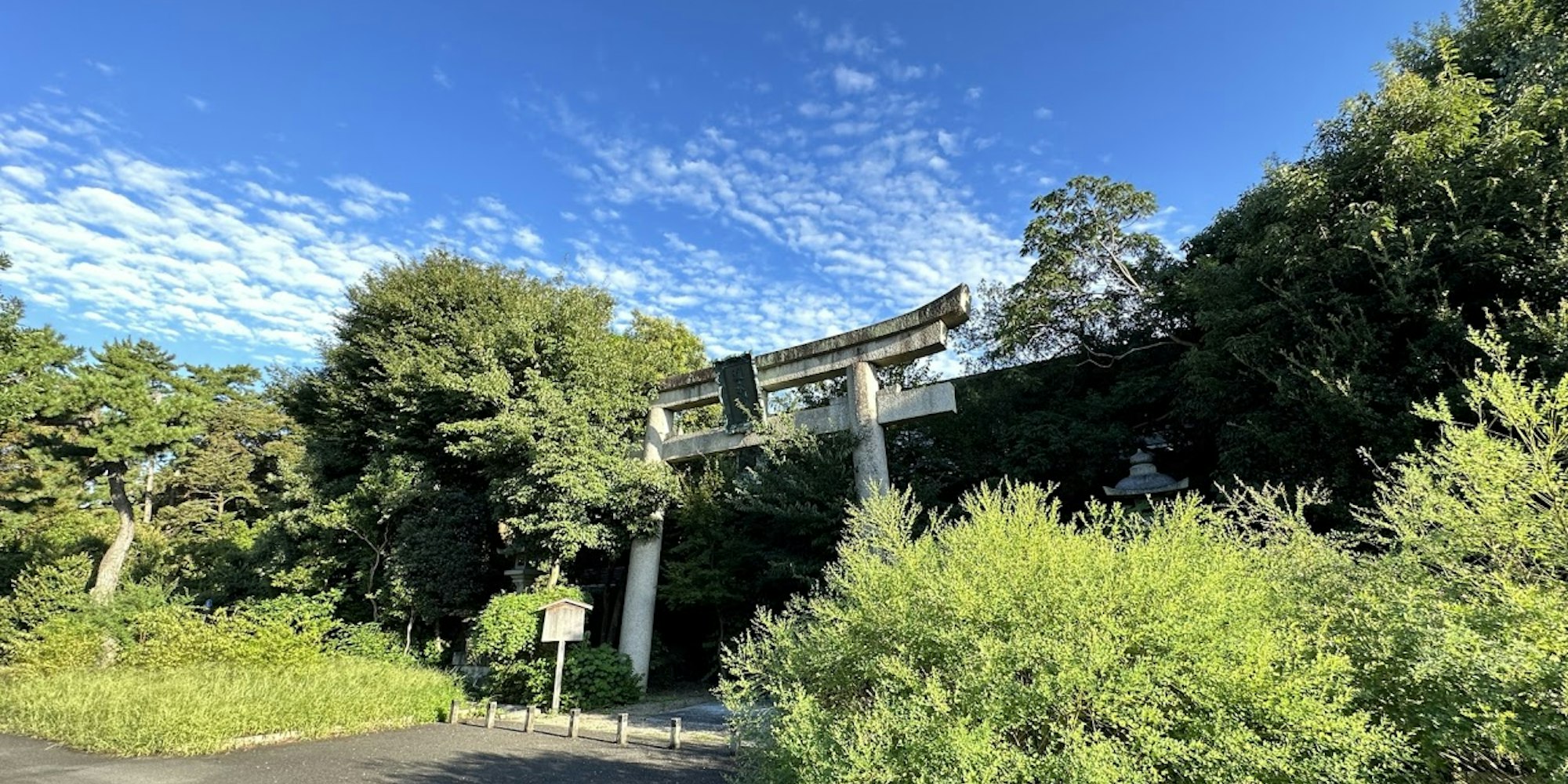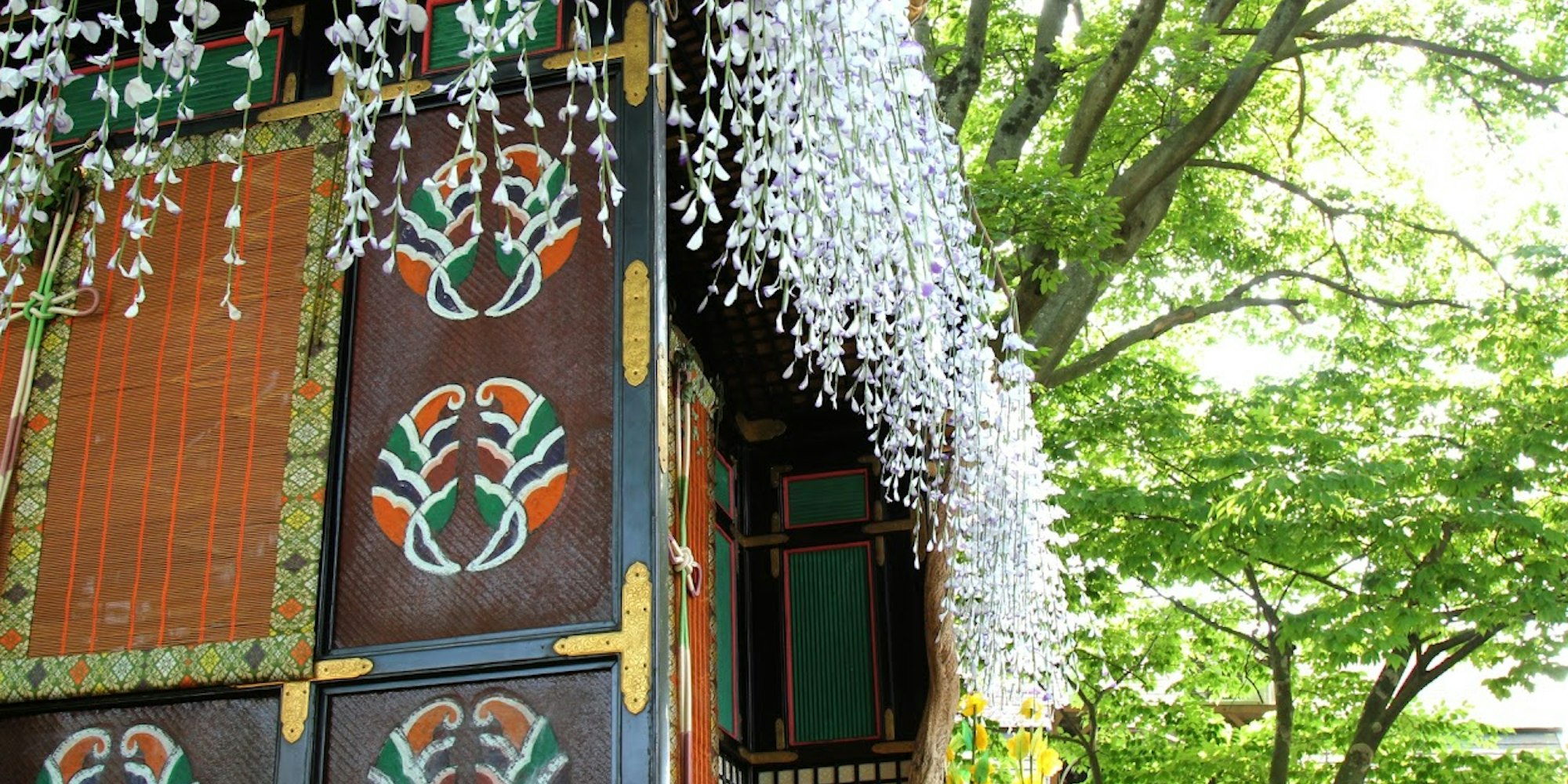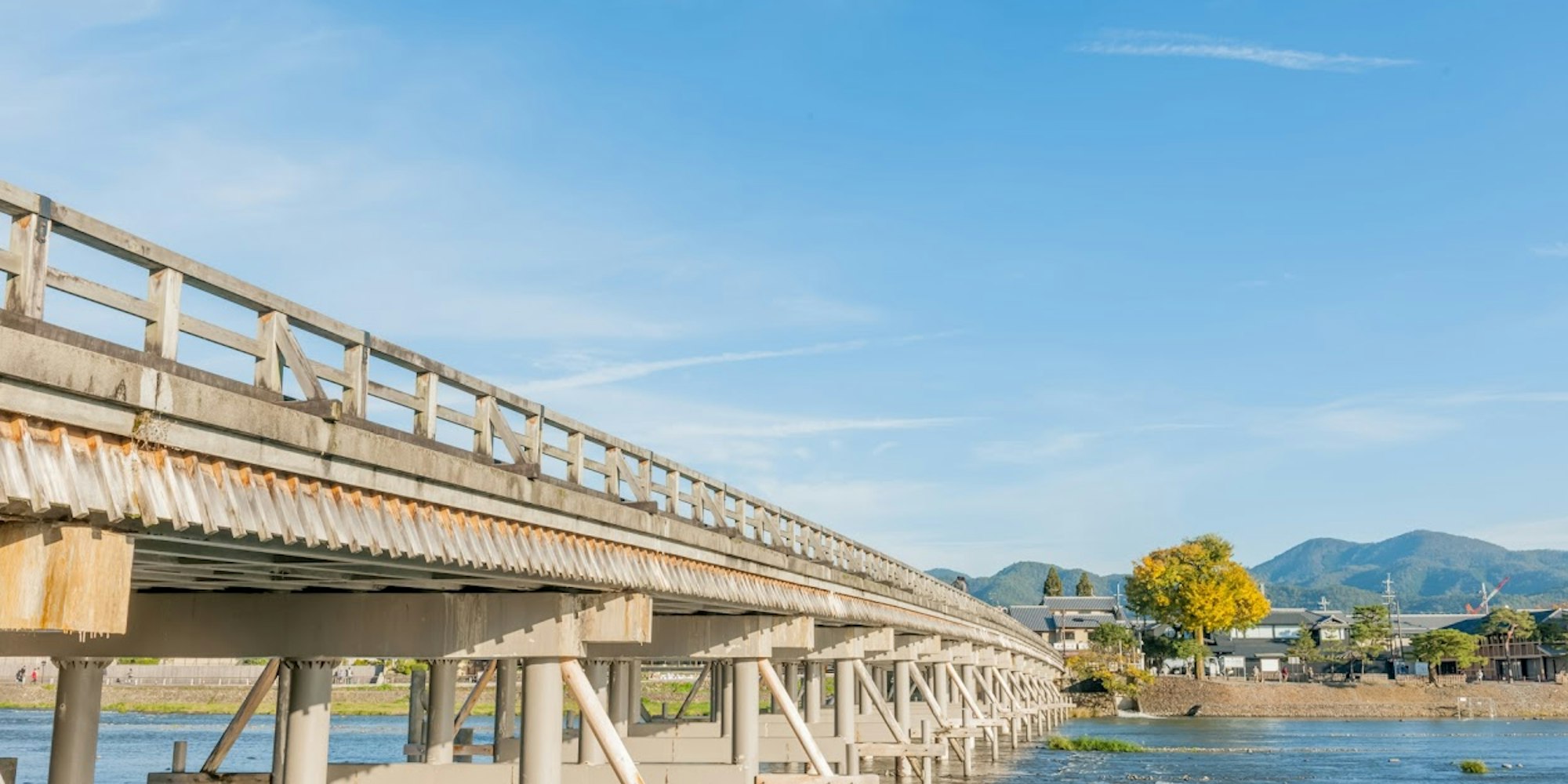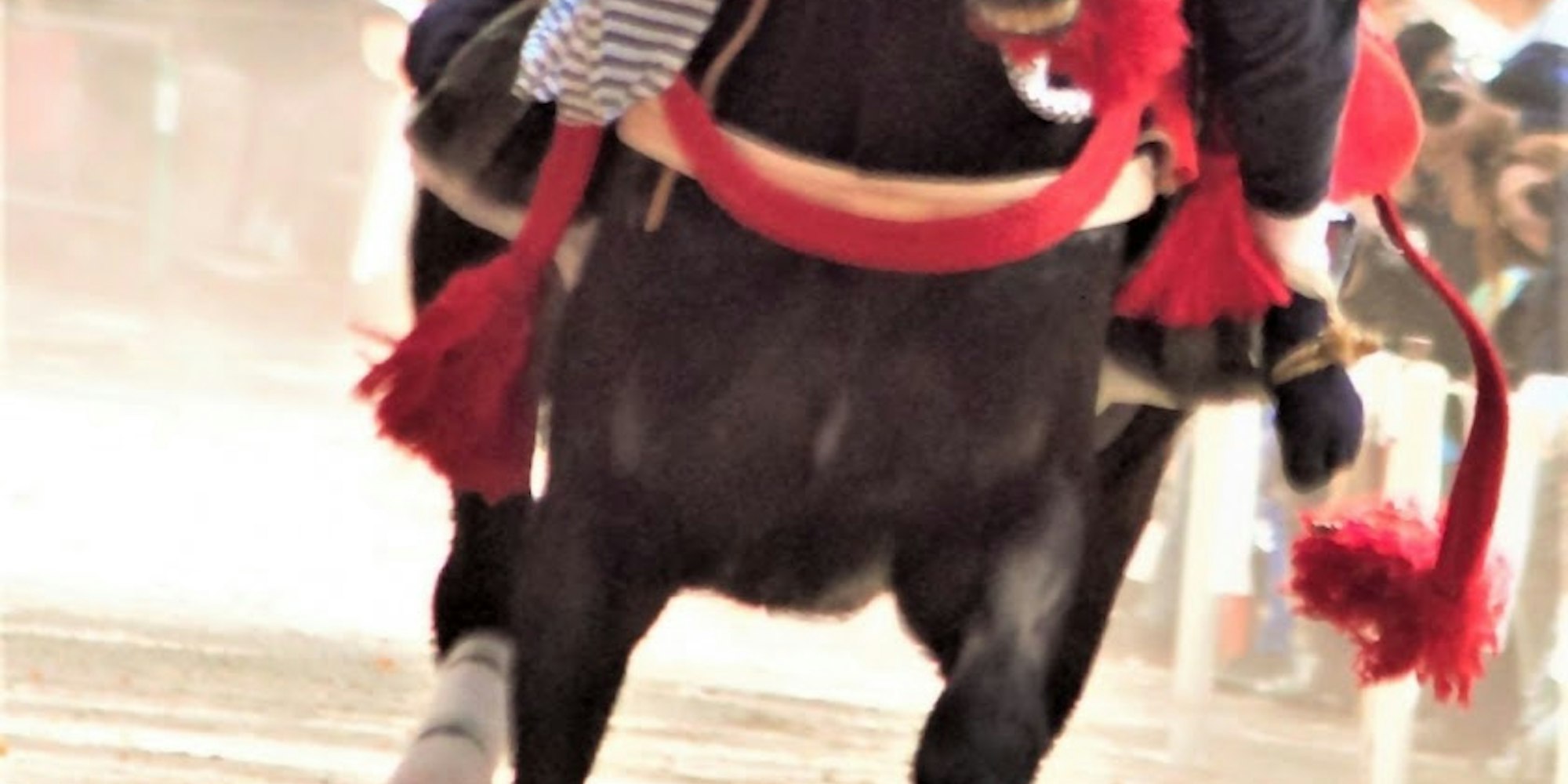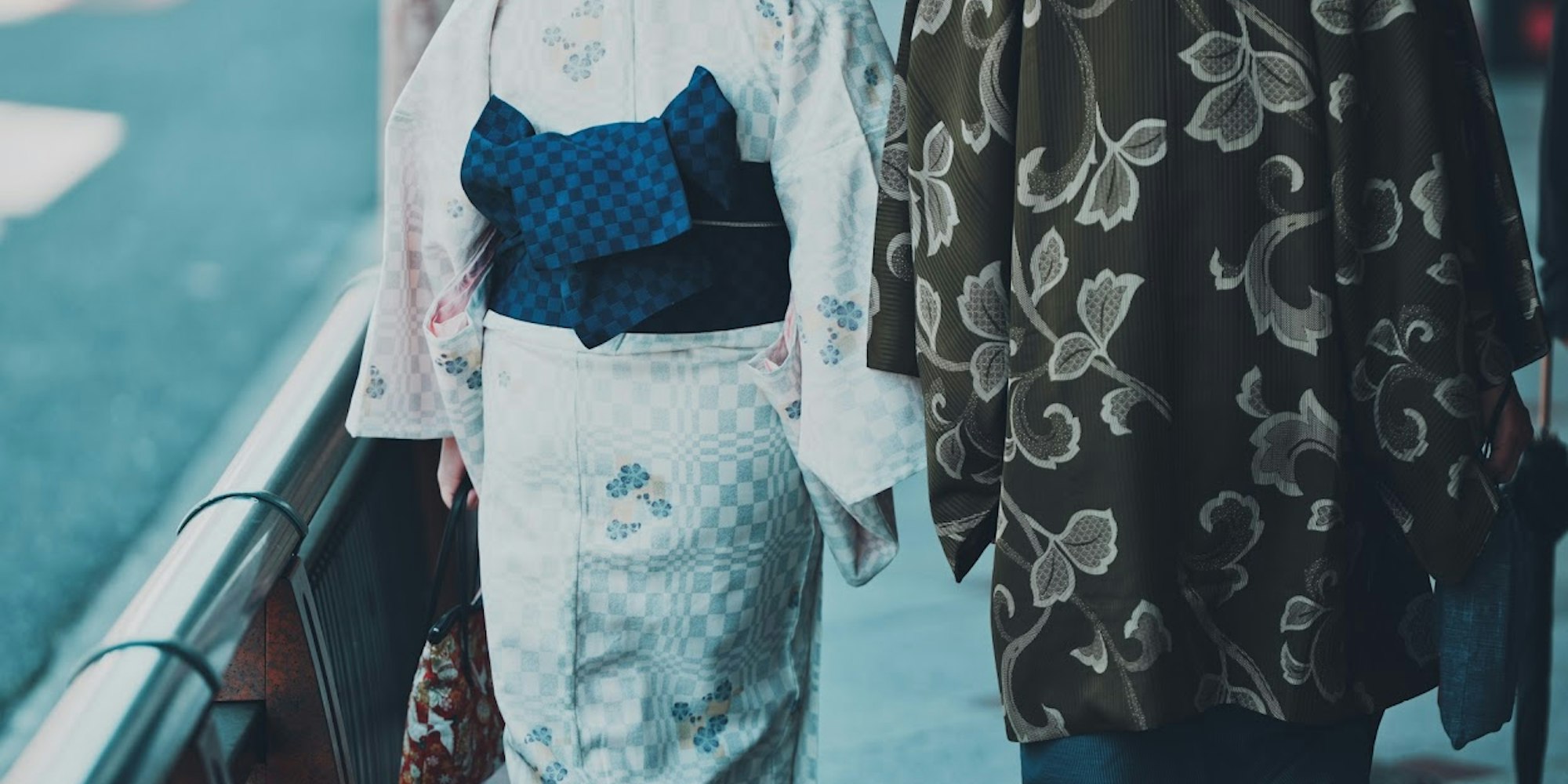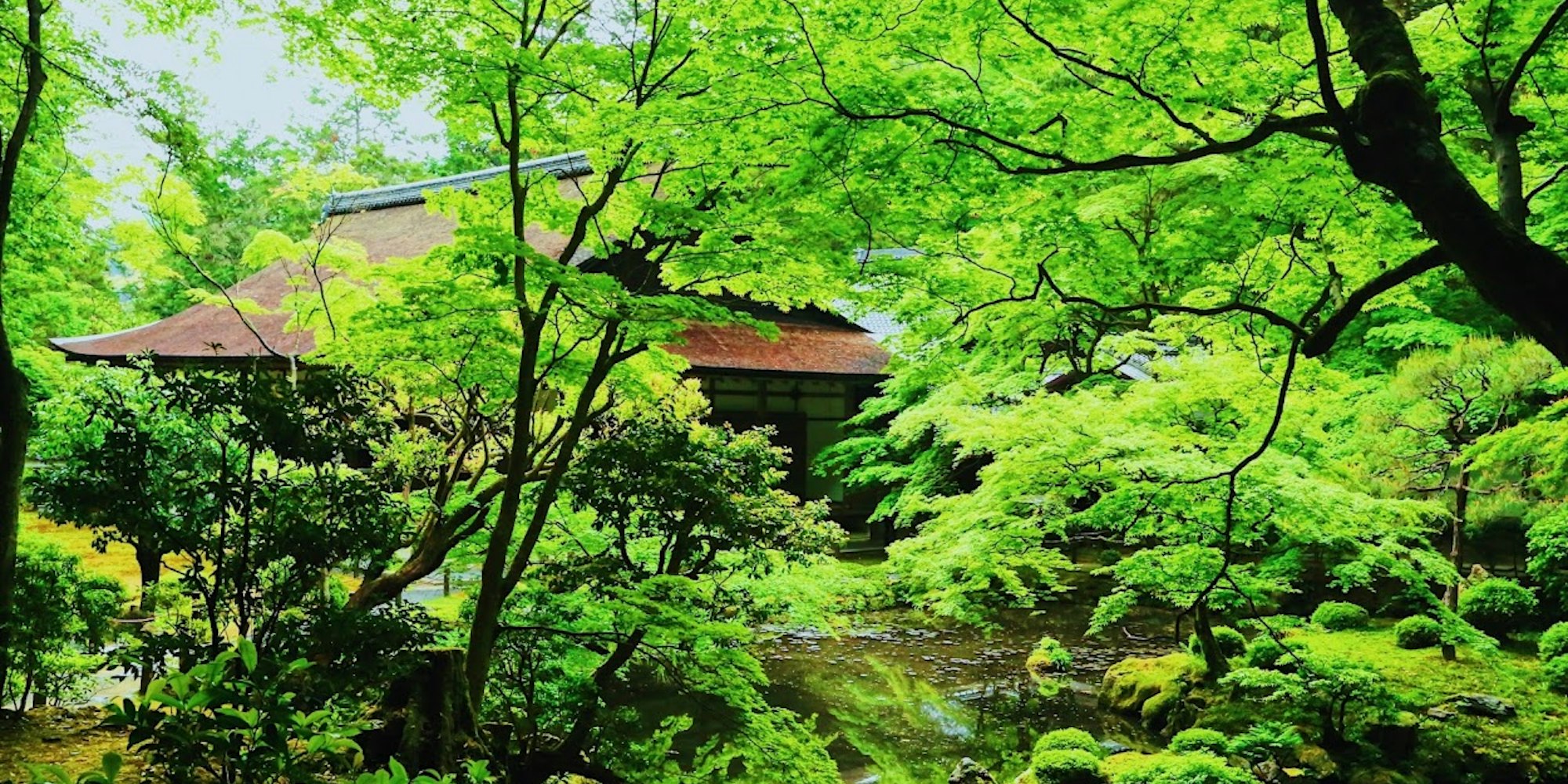With hints of early summer in the air, May is a perfect time for travel. Many of you might be considering a trip to Kyoto during the Golden Week holidays.
In this article, we'll focus on Kyoto in May, introducing 12 recommended tourist spots and 3 famous festivals held during this month.
①Komyo-ji Temple, Nagaoka City
Komyo-ji Temple in Kyoto was founded in 1198 and has a long history. It's the head temple of the Seizan Jodo sect and is now famous as a spot for viewing autumn foliage.
About 250 maple trees line both sides of the approach, creating a breathtakingly beautiful scenery. Many people still visit this temple, rich in nature, to see its different aspects throughout the four seasons.
Around May, Komyo-ji Temple is enveloped in fresh greenery. The tunnel of green maple leaves, not yet turned red, creates a mystical atmosphere.
Relax and take a stroll or snap some photos in the soothing new greenery. Even on slightly hot days, the green maple leaves provide shade, making for a comfortable experience.
The tunnel of green maples, different from the red autumn foliage, is a wonderful sight that evokes early summer. Make sure to visit and experience it yourself.
Detailed Information
Address: 26-1 Aoinishi-jyo-uchi, Nagaokakyo City, Kyoto Prefecture
■Pleasant Approach
The approach reminiscent of Nison-in Temple in Arashiyama, Kyoto, was wonderful and refreshing. It becomes an extremely popular spot during the autumn foliage season.
■Many Points of Interest
The main Buddha statue in the hall is a self-made work of Honen Shonin. As you proceed through the hall during sutra chanting, there's a long corridor that leads down to the Shaka Hall. This temple has many points of interest.
■Magnificent
With its majestic main hall, lush green maples, spacious grounds, and unique atmosphere, it's a wonderful place that brings peace to your heart.
Visiting Hours: 9:30 AM - 4:30 PM
Admission Fee: Adults 500 yen, Elementary school students 300 yen
②Myoshin-ji Temple, Taizo-in, Kyoto City
Taizo-in of Myoshin-ji Temple is the head temple of the Rinzai Myoshin-ji sect. There are several temples within the vast grounds, each of which can be visited by paying an admission fee.
It's a tourist spot full of attractions where you can experience Japanese culture with historical significance, including Japan's oldest bell tower and the Cloud Dragon painting by Kano Tan'yu.
It's a quiet place, recommended for those who want to spend time leisurely.
Myoshin-ji also offers experiences like sutra copying, open to general participation. May, being neither too cold nor too hot, is a good season for concentration. It's easy for beginners to try as well.
If you're planning to explore the vast Myoshin-ji complex with its many halls and temples, the comfortable weather in May is ideal. Make sure to take a thorough look around since you've made the trip.
Sutra copying and temple exploration while feeling the early summer air will surely be a peaceful and wonderful time. Enjoy this tranquil moment with your friends.
Detailed Information
Address: 52 Hanazono Myoshinji-cho, Ukyo-ku, Kyoto City, Kyoto Prefecture
■Didn't Know It Was Such a Major Temple!
I didn't know it was this extensive! There are various temples, and it's full of attractions. The Cloud Dragon painting is irresistible. It's breathtaking no matter how many times you see it.
■Visiting to See the Cloud Dragon Painting
Our main purpose this time was to see the Cloud Dragon painting. We went with family and could view it at our leisure. The powerful Cloud Dragon painting is definitely worth seeing!
■Dragon on the Ceiling
This temple is famous for the dragon painted on the ceiling. It looks different from various angles, so try viewing it from different directions. I ended up staying longer than planned.
Visiting Hours: 24 hours
Admission Fee: Free (separate fees for each sub-temple)
③Kitano Tenmangu Shrine Odoi / Kamigyo Ward
Kitano Tenmangu is a large shrine dedicated to Sugawara no Michizane, revered as the god of learning. Like Dazaifu Tenmangu in Kyushu, many students visit to pray for success in exams.
Affectionately called "Kitano no Tenjin-san" or "Kitano-san," Kitano Tenmangu attracts deep faith as a shrine for exam success, academic achievement, cultural arts, and protection from disasters and misfortunes.
The main shrine and the "Illustrated Handscroll of the Legends of Kitano Tenjin (Shokyu Version)" are both designated as National Treasures, and the shrine possesses numerous other valuable treasures and cultural properties.
In May, the highlight of Kitano Tenmangu is the Odoi surrounded by greenery. Odoi is one of the historical structures associated with Toyotomi Hideyoshi, built to guard against external enemies and protect the city from river flooding.
While Kitano Tenmangu's Odoi is widely known as a spot for autumn foliage, in May you can see a vibrant landscape of lush green maples. The contrast with the buildings is beautiful, so be sure to visit Kitano Tenmangu to see the green maples as well.
Detailed Information
Address: Bakuro-cho, Kamigyo-ku, Kyoto City (Kitano Tenmangu Shrine Office)
■Shrine for Academic Success and Exam Prayers
Kitano Tenmangu is famous for its plum and cherry blossoms. As it enshrines the god of learning, there are many students. The abundance of plum trees is said to be because Sugawara no Michizane loved them. Visiting in May, the fresh green foliage was beautiful in its own way.
■Relaxing Even When Crowded
Kitano Tenmangu is quite a spacious shrine. Even during crowded times, it seems possible to spend time relatively leisurely. This time I visited during the Golden Week holidays in May, but next time I'd like to come during the autumn foliage season!
■ Green Maple Leaves at Odoi
May is a beautiful time for green maple leaves. While Kitano Tenmangu's Odoi is famous for autumn foliage, I personally recommend the green maple leaves as well.
Visiting hours: 7:00 AM - 5:00 PM
Admission fee: Free
④ Kifune Shrine / Sakyo Ward
Kifune Shrine is dedicated to the deity of water, the source of all life. It has long been cherished as the head shrine of water deities, with about 2,000 shrines nationwide.
Its history is so ancient that there are no detailed records, but it is known to have existed at least 1,300 years ago. As one of Japan's oldest shrines, it attracts widespread and deep faith.
The shrine is famous for being surrounded by tall trees and for the long stone steps lined with lanterns.
The lantern-lined path and surrounding trees, known for their autumn colors, are beautiful in May when new green leaves envelop the shrine. Kifune Shrine, standing protected by thick foliage that almost darkens the area, has a mystical atmosphere that makes you feel the breath of life itself.
The area is filled with the sounds of flowing water, rustling leaves, and birdsong, allowing you to experience the great outdoors with all your senses and spend a peaceful, relaxing moment.
Why not visit the shrine of the water deity in May, surrounded by fresh green leaves and new life?
Detailed Information
Address: 180 Kurama Kibune-cho, Sakyo-ku, Kyoto City
■ Enchanting
Although we arrived much later than planned, we were able to see an enchanting view with the lit lanterns. The road was narrow and scary to drive, but it was worth it to see such a beautiful sight.
■ Perfect in Every Way
The main purpose of this trip was Kifune Shrine. The vermilion torii gate standing amidst the deep green mountains was truly divine. It's not flashy, but it has the unique atmosphere of an ancient shrine and is highly recommended! I'll definitely come again!
■ Cool Air
The area around Kifune Shrine had cooler air than other places. Even though it was early summer in May, as expected of a shrine dedicated to the water deity, it was cool thanks to the water and trees.
Visiting hours: 6:00 AM - 8:00 PM
Admission fee: Free
⑤ Mimurotoji Temple / Uji City
Also known as the "Temple of Flowers," Mimurotoji Temple is one of Kyoto's finest flower viewing spots, famous for its beautiful flowers in every season.
It's a historic temple that houses important cultural properties such as the Amida Triad statue. On the other hand, it soothes the hearts of people of all ages with flowers blooming in each season, and is particularly called the "Hydrangea Temple" for its 10,000 hydrangea plants.
It's a highly popular place to visit with a camera.
While Mimurotoji is famous for its hydrangeas, you can actually enjoy different flowers throughout the seasons. From April to May, the azalea garden is at its best. The garden usually opens from late April to early May, but please check the official website for exact dates as they are updated regularly.
In the azalea garden, pink and white azaleas of various shades bloom in profusion, filling your entire field of vision. They typically reach full bloom around Golden Week, so if you're visiting Kyoto during the holiday, it should be the perfect time to see them.
Detailed Information
Address: 21 Ōgaito Shigagatani, Uji, Kyoto Prefecture
■ Scenery Loved by All Ages
While June is famous for the hydrangeas covering the vast grounds, the azaleas are not to be missed. Before the rainy season starts, the beautiful azaleas are vibrant and lovely.
■ Early Summer Green
It was still too early for the hydrangeas to be in full bloom. A few were starting to bloom, but... The fresh green leaves were more impressive at this time. May to June is the transition period from fresh green to hydrangeas.
■ First Time at the Azalea Garden
I've been to see the hydrangeas before, but I realized I had always skipped the azalea garden, so I went in May when they were in full bloom. The sight of white and deep pink azaleas blooming profusely was very vibrant and beautiful.
Visiting hours: 8:30 AM - 4:30 PM
Admission fee: Adults 500 yen, Children 300 yen
⑥ Tadasu no Mori / Sakyo Ward
Tadasu no Mori, located within the Shimogamo Shrine area, is a popular healing power spot in Kyoto. The path through this ancient forest forms a tunnel of trees, enveloping visitors in completely different atmospheres with each season, from fresh green leaves to autumn colors.
Tadasu no Mori serves as the approach to Shimogamo Shrine, and if you walk straight through, you'll reach the shrine grounds. Shimogamo Shrine is famous for matchmaking and beauty prayers, making it particularly popular among women.
In May, when it starts to get a bit hot, it's recommended to take a leisurely walk through the cool Tadasu no Mori on your way to pray at Shimogamo Shrine.
Tadasu no Mori preserves an ancient primeval forest and is surrounded by tall trees. These trees block the sunlight, keeping the air inside cool, making it perfect for a relaxing walk.
In May, Tadasu no Mori, filled with greenery, is known as a healing power spot and a place where hearts can find peace. Take time to relieve your daily stress, stretch, take deep breaths, and spend some relaxing moments here.
Detailed Information
Address: Tadasu no Mori, 59 Shimogamo Izumigawa-cho, Sakyo-ku, Kyoto City
■ A Grateful Spot for Healing and Power
Tadasu no Mori spreads across the Shimogamo Shrine area. It's a place rich in nature, and apparently, this forest has been here since ancient times. I recommend walking straight along the approach from the south side for a atmospheric experience.
■ Power Spot!
Tadasu no Mori has become famous for teamLab's late summer light-up events, but it's actually a power spot with a primeval forest and a healing forest. I made sure to receive some power this time as well.
■ A Cool Place
I took a leisurely walk. The air is clear, and it feels cool even in early summer. I was soothed by the lush green trees.
Here's the English translation of the specified portion of the blog post:
Visiting hours (Shimogamo Shrine): 6:00 AM - 5:00 PM
Admission fee (Shimogamo Shrine): Free
⑦ Ota Shrine / Kita Ward
Ota Shrine is dedicated to Ame-no-Uzume-no-Mikoto. It is believed to bring benefits for success in performing arts and longevity.
Although the exact year of its establishment is unknown, it is said to be the oldest shrine in Kamo, predating even Kamigamo Shrine. It has long been a place of worship for good fortune and prosperity.
Ame-no-Uzume-no-Mikoto is the goddess who performed a sacred dance during the mythical opening of the heavenly rock cave. Even today, many people visit to pray for success in the arts.
In May, Ota Shrine is famous for its irises, which reach full bloom in June. The sight of wild irises blooming en masse is breathtaking, attracting many visitors.
The wild iris colony at Ota Shrine is designated as a natural monument. This rare sight of a wild iris colony is definitely worth seeing.
Why not visit with a camera in hand to capture the irises in full bloom?
Detailed Information
Address: 340 Kamigamo Honzan, Kita-ku, Kyoto City, Kyoto Prefecture
■ Just a short walk from Kamigamo Shrine
It's about a 10-minute walk from Kamigamo Shrine. While cherry blossoms and autumn leaves are beautiful, the irises in May are also wonderful. Highly recommended.
■ Mentioned in ancient poetry
This place is mentioned in a poem by Fujiwara no Shunzei, father of Fujiwara no Teika, known for the Ogura Hyakunin Isshu. The beautiful irises are a must-see.
■ Iris-themed amulets
Although the irises weren't blooming when I visited, I was delighted to see iris embroidery on the amulets. I'd like to visit again during full bloom.
Visiting hours: 9:00 AM - 5:00 PM
Admission fee (during iris blooming season): 300 yen
⑧ Keage Incline / Sakyo Ward
The Keage Incline is a former railway track that was actually used in the past. Now preserved as a national historic site, it's open to the public as a tourist spot.
Photos taken at the Keage Incline, which retains its original appearance, look like scenes from a drama or movie, attracting many photographers. The atmosphere changes dramatically depending on the season and time of day, ensuring great photos whenever you visit.
For Instagram-worthy shots, consider dressing up. Kimono or fashion reminiscent of the Taisho or Showa eras works well.
Did you know that the Keage Incline is not only famous for its cherry blossoms but also beautiful in fresh greenery? From around May, after the cherry blossoms have fallen and new leaves have sprouted, the Keage Incline becomes a lush green avenue, presenting a scene reminiscent of bright youthful days.
Don't assume it's not worth visiting outside cherry blossom season; be sure to experience the Keage Incline in its fresh green state as well.
Detailed Information
Address: 339 Higashikobusho-cho, Higashiyama-ku, Kyoto City, Kyoto Prefecture
■ Found on Instagram!
I discovered this photo spot on Instagram. Young people were enjoying taking photos, creating a great atmosphere. Definitely go and take some pictures!
■ Many people in kimono
It's a famous spot for photography. It seems many people come dressed in kimono for photos. While cherry blossom season is famous, the fresh greenery was also beautiful.
■ Even after the cherry blossoms
Although the cherry blossoms had fallen, I still managed to take good photos. Each season has its own charm.
Open hours: 24 hours
Fee: Free
⑨ Rurikoin Temple / Sakyo Ward
Rurikoin Temple is famous as a place to take beautiful photos. The outside scenery reflected on the polished black tables creates a mirror-like effect, attracting many photographers during the special viewing periods.
The spring special viewing period is from mid-April to mid-June, so you can generally make reservations in May.
The windows of Rurikoin Temple overlook a sea of maple trees, offering beautiful views of fresh greenery in spring and autumn foliage in fall. The breathtaking scenery is like being in a movie theater.
May is the perfect time to see the beautiful fresh greenery, with a stunning contrast between green and black. For photos, it's recommended to use low angles including the tables or wide shots from inside the temple.
Every view is beautiful, so even if you're not skilled at photography, you're sure to capture some wonderful shots.
Detailed Information
Address: 55 Higashiyama, Kamitakano, Sakyo-ku, Kyoto City, Kyoto Prefecture
■ Glad I came
I visited on a school trip. My friend insisted on including it in our itinerary, but once we arrived, I was the one who couldn't stop taking photos. I want to go again.
■ A respite from the heat...
I visited Rurikoin seeking coolness. While the autumn foliage is wonderful, the fresh greenery season is also great. Being a weekday, I could enjoy it at a leisurely pace.
■ As beautiful as rumored
It was my first visit, and it was as beautiful as I'd heard. The beautiful fresh greenery, wet from rain, was even more dreamlike. I'd like to visit again during the autumn foliage season.
Visiting hours: 10:00 AM - 5:00 PM
Admission fee: 2,000 yen
⑩ Jojakko-ji Temple / Ukyo Ward
Jojakko-ji Temple (常寂光寺) is a famous spot in Kyoto known for its autumn foliage. It is said to have been founded between 1596 and 1614, with its main hall constructed by relocating the guest hall of Fushimi Momoyama Castle.
The Nio Gate and Nio statues are notable features, and while not flashy, it is a quiet temple with a solemn atmosphere. Located in a beautiful area surrounded by trees, it offers a rich natural experience enhanced by moss.
Its appearance, seemingly hidden by leaves, creates a mystical atmosphere.
Around May, the maple leaves are blue, and the area around Jojakko-ji is enveloped in lush green. It's a completely different landscape from the autumn foliage, filled with life-giving energy that can empower you.
Visiting Jojakko-ji, standing majestically amidst the synchronization of blue-tinged maple leaves and moss, will likely leave you feeling refreshed in body and mind. Take your time to calm your heart as you tour the temple grounds.
There are times when special viewings are held, so it's recommended to check the official website for information in advance.
Detailed Information
Address: 3 Ogura-cho, Sagaogura-yama, Ukyo-ku, Kyoto City
■ Spring is also good
Jojakko-ji represents Kyoto as a treasure trove of autumn foliage. While autumn is certainly beautiful, the blue-tinged leaves from spring to early summer are also recommended.
■ Before the rainy season
I visited Jojakko-ji before the rainy season started. The fresh greenery was beautiful and complemented the moss nicely.
■ Beautiful even without autumn foliage
Jojakko-ji, famous for its autumn colors, is actually a lovely place in spring too. It's very relaxing.
Viewing hours: 9:00 AM - 5:00 PM
Admission fee: 500 yen
⑪ Fushimi Inari Taisha / Fushimi Ward
Fushimi Inari Taisha is a shrine that has become one of Kyoto's most popular tourist spots. It's a grand shrine dedicated to Inari, where you can also see fox statues.
The highlight that leaves many visitors in awe is the Senbon Torii, a path of numerous vermilion torii gates that form a tunnel-like passage. Many people are moved by this sight of continuous torii gates.
Incidentally, the vermilion color, also called "ake," carries the connotation of bright hope. It embodies a strong faith in the power of life, land, and production as the spiritual work of the Inari deity.
While Fushimi Inari Taisha is wonderful to visit at any time, it's particularly beautiful during the autumn foliage and fresh greenery seasons.
The fresh green leaves of May enhance the vermilion torii gates and main hall, creating a landscape that exudes vitality. Enjoy the contrast between the new green and vermilion colors.
Also, since Fushimi Inari Taisha requires climbing a long path, it's recommended to visit during the comfortable temperatures of spring or autumn. Visiting on a cool day in May will allow you to pray with a calm mind.
Detailed Information
Address: 68 Fukakusa Yabunouchi-cho, Fushimi-ku, Kyoto City
■ Early morning is recommended
Fushimi Inari Taisha is a popular spot crowded with tourists year-round. To avoid the busiest times, it's recommended to wake up early and go in the early morning.
■ Photos in kimono!
I went to Fushimi Inari Taisha with friends wearing kimono! The torii gates and kimono go so well together, we got some great Instagram-worthy photos!
■ Fresh green and vermilion
While Fushimi Inari Taisha is known for its impressive vermilion torii gates and main hall, the contrast between the green and vermilion during the fresh greenery season is very beautiful. The autumn foliage season is nice too, but personally, I also like Fushimi Inari Taisha around May or June.
Viewing hours: 24 hours
Admission fee: Free
⑫ Nashinoki Shrine / Kamigyo Ward ⑫ Rurikoin / Sakyo Ward
Nashinoki Shrine (梨木神社) is famous for its beautiful fresh greenery. Trees and plants grow everywhere, from the torii gate to the worship hall and the approach, and in May, it's filled with lush green foliage.
The sacred katsura tree is affectionately known as the "tree of love" because its leaves are heart-shaped. It's said that touching the tree while praying can make wishes come true, so be sure to touch it when you visit.
Nashinoki Shrine is also known as "Hagi no Miya" (Palace of Bush Clover) and is famous for its bush clover.
Surrounded by tall trees, including the sacred tree, Nashinoki Shrine shows different aspects throughout the seasons. From early to mid-summer, it's a time when the green colors are particularly beautiful, refreshing both eyes and heart.
The harmony between the brown of the buildings and the green creates a lovely scenery. Take your time to walk along the approach and the shrine grounds to relieve your daily fatigue.
Detailed Information
Address: 680 Someno-cho, Kamigyo-ku, Kyoto City
■ A shrine with beautiful nature
This shrine is famous for its beautiful bush clover flowers in September. When I visited around May, it had a different atmosphere with the surroundings covered in fresh greenery. The temperature was comfortable, so I took my time walking around.
■ A tasteful shrine
It's located just outside the Kyoto Imperial Palace. It's a tasteful shrine with a solemn atmosphere. The approach is long, but I felt like I absorbed good energy while walking and enjoying the fresh greenery.
■ A quiet place
While famous for its three sacred waters of Kyoto and bush clover flowers, this shrine has fewer tourists and offers a quiet experience.
Viewing hours: 6:00 AM - 5:00 PM
Admission fee: Free
3 Famous Festivals in Kyoto in May
Aoi Festival
The Aoi Festival, which decorates the early summer with a procession, is said to have started about 1500 years ago at Kamigamo Shrine and Shimogamo Shrine. People dressed in Heian-period costumes walk along a distance of about 8km.
As it's also famous as a major event in Kyoto, if you can visit Kyoto on that day, please try to attend.
Date: May 15th (postponed in case of rain)
Location: From Kyoto Imperial Palace to Shimogamo Shrine to Kamigamo Shrine
Mifune Festival
The Mifune Festival is a river festival held every May. It recreates the boat rides of the Heian period, when Kurumazaki Shrine's enshrined deity, Kiyohara no Yoritsune, was active, on the Ooi River.
It's a spectacular event where various traditional performances are showcased on boats such as the Goza-bune, Ryuto-bune, and Genjiko-bune. Another highlight is a woman chosen by public application who dresses up as Sei Shonagon.
Date: Third Sunday of May
Location: Around Arashiyama Ooi River
Access:
Fujimori Festival
The Fujimori Festival is a spring festival held every May at Fujimori Shrine. It was formerly called the "Fukakusa Festival" and has continued since the middle of the 9th century. While the portable shrines and samurai processions are worth seeing, the horse-racing ritual (Kakeum) held in the shrine's grounds is particularly impressive. Riders offer life-risking horsemanship to pray for safety throughout the year.
Date: May 1-5 (Horse-racing ritual on the 5th at 11:30 and 13:30)
Location: Fujimori Shrine
Access: 7-minute walk from Sumizome Station
Make Your Kyoto Sightseeing Special by Wearing a Yukata or Kimono
For Kyoto sightseeing, which offers many opportunities to experience Japanese culture and history, traditional Japanese clothing is recommended. Even if you don't own a kimono or yukata or don't know how to put one on, you can easily rent one.
The weather in Kyoto in May can be chilly on some days and hot on others. Choose between a yukata or kimono depending on the temperature of the day.
At Kimono Rental Wargo, professionals will assist you from selecting a yukata or kimono to dressing you. Even if you don't know how to put on a kimono, you can leave it to them, so please use their service if you want to wear a kimono while sightseeing in Kyoto.
Summary
In May, Kyoto often enjoys comfortable temperatures, making it easy to walk all day without getting tired. Let's fully enjoy this city of Japanese culture and history.
The tourist spots and festivals introduced in this article are must-see attractions. If you're unsure about where to go when planning your trip, please use this as a reference.
Also, kimono or yukata are perfect for walking around Kyoto. Not only are they photogenic, but wearing clothes that blend with the scenery allows you to get closer to the culture and history.
Even if you don't usually wear traditional Japanese clothing, you can easily enjoy wearing kimono at Kimono Rental Wargo. Why not make your Kyoto sightseeing more enjoyable by wearing a kimono or yukata that suits the climate and season?


